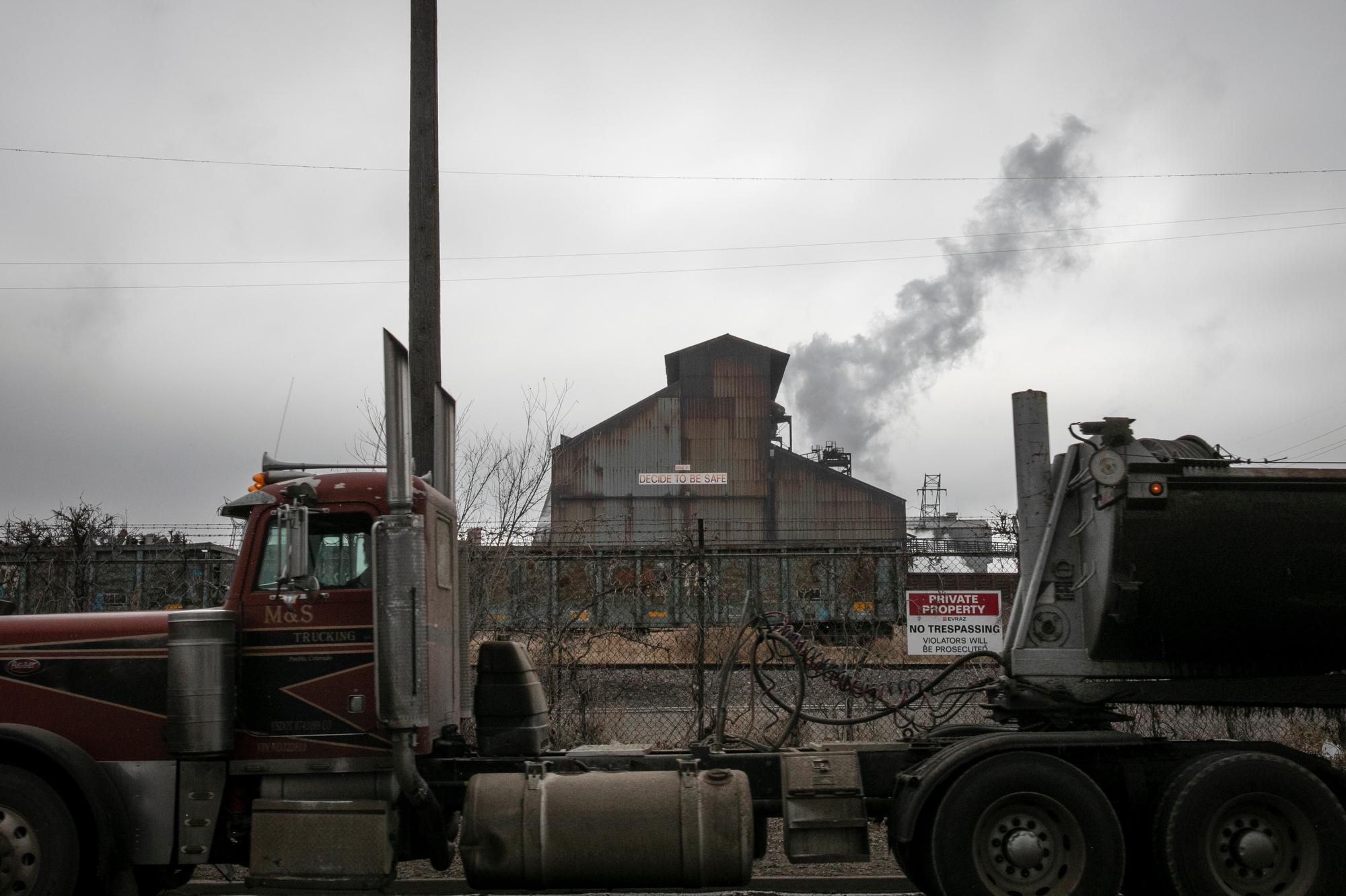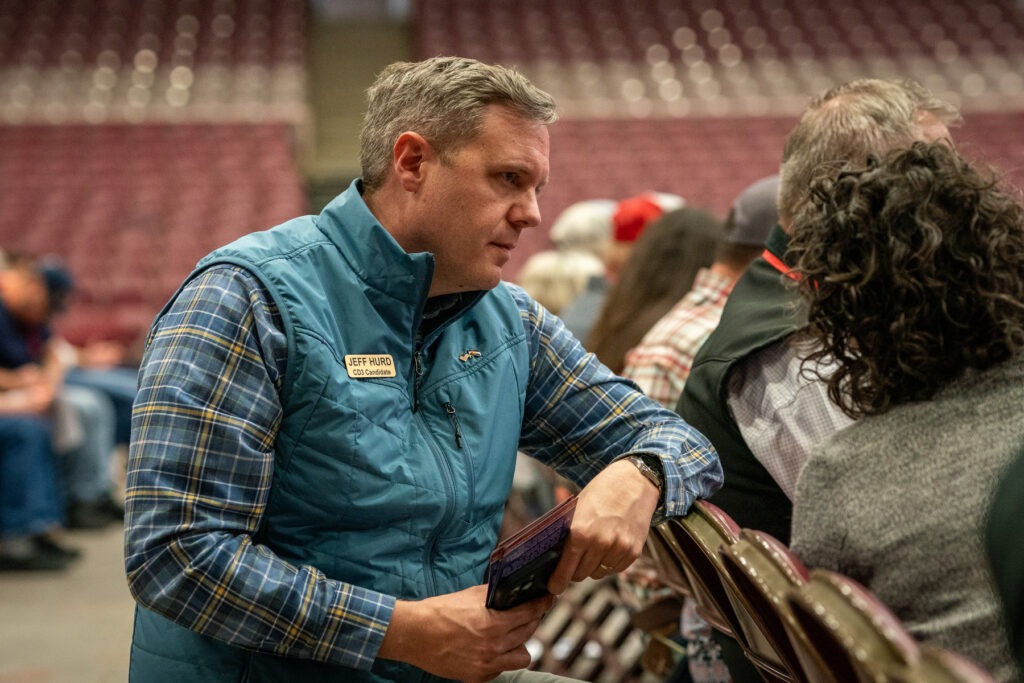
KRCC News sent detailed surveys about some of the most critical issues facing city leaders, to the candidates running for the three “at-large” seats on Colorado Springs City Council. The short biography below is gleaned from the candidate's response, their websites and other sources.
Katherine "Kat" Gayle grew up in Colorado and married a Marine-turned-diplomat, whose career took their family all over the world, eventually landing in Colorado Springs. Both abroad and locally, she’s worked on various humanitarian projects including children’s food and medical aid, anti-trafficking programs and access for people with disabilities. She’s an advocate for transparent accountable government, supporting public safety personnel, and smart growth. Gayle holds a bachelor’s degree in history from Amherst College and a juris doctorate degree from Georgetown University Law Center.
Role and vision
What is your elevator pitch for why voters in Colorado Springs should choose you as the next at-large council representative?
I believe in representative governance and have watched as our leaders cater to special interests to our peril. That said, I'm not an ideologue, nor do I have fixed views. If new information proves the citizens are better served, I will pivot. What happens in your neighborhood, in our community, should be decided by you, not bought-and-paid-for-politicians or their donors. My top priorities include: Fostering transparency and fair process; Ensuring that citizen concerns are heard in a fair and equitable manner; Protecting citizens’ property rights and neighborhood character; Promoting Universal Design for Accessibility and Aging-in-Place; Supporting public safety best practices, including hiring and training more police and providing better pay and benefits; Supporting Open Space growth and protection; Addressing issues of homelessness with proven programs; and Supporting smart growth considering existing neighborhoods, businesses, infrastructure, and water use. My tag line is “for the people”
What do you see as the role and/or function of city government?
The role of city government is to do the things that only government can do in an effective, efficient and equitable manner to serve all of our residents, including the following. Maintaining and improving the city’s infrastructure that includes roads/bridges, stormwater runoff, water quality, public safety (police, fire, and public health), transportation planning & implementation, land use planning and approval, preparing for natural and other disasters, and overseeing public utilities that provide services to all residents. Supporting a quality of life throughout the city by promoting the public good by fostering economic vitality, access to quality medical care, public libraries, educational opportunities, social and outdoor recreational activities and the arts. Fostering relationships and developing agreements with surrounding governmental entities including El Paso County, surrounding cities, counties, military bases, the state and federal government. Government's primary obligation is to provide a safe, law-abiding community in which all citizens can thrive irrespective of socio-economic class, lifestyle, gender, race or sexual identity. The government is responsible for using Fair Process to balance competing interests. Neighborhoods comprise individual citizens. As we protect the safety of individuals, the government must protect the character of neighborhoods even as it considers new projects to help our community move forward.
What is the number one challenge facing the next council of Colorado Springs, and how would you address it?
Promoting intelligent growth across the city so that every neighborhood and area is desirable. I would accomplish this by supporting the following:
The use of Urban Redevelopment Funds to address urban redevelopment in blighted areas not development of pristine prairie;
Ensure that the hiring of police, code enforcement and fire personnel keeps even with growth;
Ensure that water supply is adequate for development in the aggregate not just each project independently;
Ensure that development pays its full cost;
Evaluate proposed development and its impact on surrounding neighborhoods with input from area neighborhoods and businesses;
Evaluate every project considering the existing public transportation infrastructure and what the costs of connecting new development would be.
What is your vision for Colorado Springs in the next 25 years, and what realistic policies do you propose to get us there?
My vision is a city that is leading Colorado toward a sustainable economic and environmental future. We face enormous challenges like our country and state. We could lead our state in clean energy development and production, multimodal mass transit, space and defense technology, livable communities and urban redevelopment. We could promote Universal Design to allow us the freedom to Age-in-Place, and become the model for future residential planning.
Law enforcement / Public Safety
What is the most pressing public safety issue facing the city and how would you address it?
We need to address the shortage in police, fire, EMT and 911 staff immediately. It’s clear that the explosive growth of the city has not been planned or managed effectively such that, across the board, we are struggling with deficits. Further problems include a road network that is critical to both daily commuting and emergency evacuations but is overburdened and riddled with potholes.
What is your response to the findings from the audit on how the Colorado Springs Police Department uses force? What, if any, changes need to be made to the way CSPD operates?
We must create a culture of work/life balance. I see three major components to this strategy.
What do you think of the current relationship between the Colorado Springs Police Department and the public? Is it acceptable or should more be done, and if so, what?
Sadly, I feel there is mutual distrust between the public and Colorado Springs Police. I would like to see a community-based policing model as discussed in the previous question. This would promote cooperation and trust between the police and the citizenry.
What do you think of the Law Enforcement Transparency and Advisory Commission (LETAC)? What would you do differently with this commission or its purpose if given the chance?
I would restore the word Accountability to the name. LETAC exists for transparency and fair process and to ensure the balance of citizens' rights and police officers needs to make split-second decisions. LETAC should protect police by ensuring understanding of current methods. Meanwhile, citizens would have representation in matters such as perceived excessive use of force claims.
Emergency officials are implementing new notification software and other measures in the case of a wildfire or other hazard, but some residents say that isn’t enough. How would you address their concerns?
Zone Haven is not enough to meet a fast moving, wind driven fire. The Marshall Fire is incontrovertible proof of this. Our infrastructure is far more limited than that of Boulder County. We must employ the evacuation modelling and mapping tools obtained by Westside Watch as a basis and expand our studies from there. The grassfire near Great Wolf Lodge last year brought Voyager Parkway to a halt. Wildfires are no longer just a threat to WUI residents. Evacuation route maps should be provided to every citizen and be available to tourists.
Growth
How do you define sustainable and responsible growth, and is the city successful in growing responsibly and sustainably?
The unplanned sprawl that is the current growth model for the city is neither responsible nor sustainable. Rather we must promote sustainable growth across the city so that every neighborhood and area is desirable and has a character of its own. I would accomplish this by supporting the following: The use of Urban Redevelopment Funds to address urban redevelopment in blighted areas not development of pristine prairie; Ensure that the hiring of police, code enforcement and fire personnel keeps even with growth; Ensure that water supply is adequate for development in the aggregate not just each project independently; Ensure that development pays its full cost; Evaluate proposed development and its impact on surrounding neighborhoods with input from area neighborhoods and businesses; Evaluate every project considering the existing public transportation infrastructure and what the costs of connecting new development would be
What different approach would you take, if any, to help address housing affordability?
Building new housing and/or repurposing existing structures must be considered on a neighborhood by neighborhood basis. High density developments should only be considered in areas with adequate infrastructure and public transportation. Any new housing whether it's renovation of vacant buildings or original builds must be made in compliance with the city code. Further, code enforcement must be conducted on a regular basis to ensure the protection of the preexisting neighborhoods and businesses. In some areas, building ADUs as long-term rentals provides affordable housing and an income for a resident property landowner. It also enables independent living for individuals and their caretakers. However, we must ensure that such property configurations are not owned and operated by nonresident investors. These situations quickly devolve into 420 airbnbs and have significant negative impact on their neighbors. Builders of new residential developments could receive financial incentives to build a certain number of housing units at lower costs.
Infill is identified in the PlanCOS master plan as a key strategy for the city moving forward, and yet, council is currently debating annexations. How do you define infill and how do you balance it with annexations?
As above, infill is only practical in areas with adequate infrastructure and access to public transportation. It is cost-effective and eliminates urban blight in areas that contain abandoned buildings and office space. BUT infill on the west side of I25 is dangerous to the point of recklessness. The existing infrastructure was barely enough to allow safe evacuation during the Waldo Canyon fire. Adding more housing units and more vehicles to roads that are already at capacity cannot continue. Infill developments must also adhere to water ordinance requirements.
What do you think of the recent water service extension ordinance passed by council and signed by the mayor aimed at limiting annexations based on water supply? What would you have done differently?
Water policy, rights, consumption and conservation is of paramount importance to our lives on a high altitude, temperate desert. The availability of water must shape our planning decisions. We are faced with an ongoing drought; any further impact to the water cycle and demand for additional resources must be balanced with the need for housing. However, the 128% tweak of the developer-proposed 130% water ordinance is misleading at best. The process was rushed and lacked the scientific analysis and data needed for such a vital public policy. We must have the flexibility to consider each proposed annexation or infill request on a case-by-case basis. We need to ensure that we have a process with stakeholders from water experts, environmental scientists, the public and affected business sectors to undergo a methodical review of our current situation and forecasted future based on objective criteria and unbiased data.
How do you balance maintaining the character of Colorado Springs with the need for development? What is the character of Colorado Springs?
Any planning or budgetary decision is fundamentally a moral one that prioritizes some issues over others and states, "This is what we stand for." With TOPS legislation, the citizens voted to tax themselves because we as a community believe that Parks, Trails and Open Spaces are necessary to the enjoyment of our lives. It is a problem when these funds are misappropriated to maintain municipal parks. My top priority is the protection of neighborhoods that includes their character and residents. Citizens property rights must be balanced with those of developers. The citizens' voices must be heard in a fair and equitable manner. We must adhere to the requirements of the city code rather than granting variances on top of variances. Decision making must foster transparency and fair process; I am the Gayle force for the people. We are a city with an economy based on troops and tourism, both populations are transitory. We love our outdoor spaces; we are the Olympic and Paralympic City -- I am not sure whether any of this provides us with a unifying character.
Transportation / Infrastructure
What is the most important infrastructure project needed in Colorado Springs right now, and how would you address it?
We need to increase our fixed route public transportation. We need to improve its reliablity, expand its routes and increase the times that it is available. More movement means more money earned and more money spent by people who rely on public transportation. This improves our tax base.
How do you feel about the transportation options currently available in Colorado Springs? What plans, if any, do you have to increase options for reliable public transportation?
The area serviced by public transportation is extremely limited in scope and in available times. We should study Fort Collins and other cities' systems as examples so that we can follow best practices as we develop and improve our own. At this point, Colorado Springs is an automobile based commuter economy.
What are your thoughts about expanding the use of active transportation like bicycles or walking? Should it be a primary focus and if so, what should be done?
We absolutely should expand and incentivize the use of active transportation. I have a number of friends who commute to work by bicycle and often have harrowing stories of near accidents. This should not be a primary focus, but rather be part of a multimodal transportation plan. As soon as we focus on one mode, we neglect to consider the ramifications on others.
Parks & Open Space, Economy & Other
General Palmer's original vision for the city of Colorado Springs was that of a planned community, built around its natural beauty and environment. Do you agree with that vision, and if so, how do you plan to stay true to it?
I do agree with his plan. When developer funded government officials ignore the City Code or allow continued variances on it, they are acting in opposition to this statement. First, we must acquire more open space and secure connectors for wildlife and recreational users to move between the areas. It is far cheaper to maintain natural open space than traditional parks with nonnative plantings. Second, we must restore the requirement of parcels of land set aside in new developments. The pay in lieu exception leaves us with funds that decrease in real value over time and no available vacant land in a natural state to purchase. Third, new building must consider the preexisting neighbors and businesses. Citizen concerns and impact must be part of every planning permission.
What do you see as the current state of economic diversity, and where does the city have the opportunity to grow?
I am concerned about the lack of economic diversity in Colorado Springs. It's all troops and tourism. Tourism brings sales tax revenue, but the jobs it supports tend to be minimum wage with few or no benefits. We need to attract a high wage, educated work force as other Front Range cities have done. There are possibilities in robotics, tech, even think tanks and startups that we need to attract. Google and Amazon both have campuses north of Denver. Meanwhile, we have an Amazon warehouse fulfillment center and chip manufacturing. Both provide hourly wages not salaries. Higher wage workers have greater disposable incomes and could help us maintain a tax base if the tourist dollars dwindle in a recession.
Is the city doing enough to address the issue of people experiencing homelessness? What, if anything, would you do differently?
No. Current homeless programs shift the populations around the city rather than actually address the needs and attempt to find solutions for the root causes rather than the symptoms. A housing first model has proven successful in Utah and Columbus, Ohio. I would do further research on the requirements to implement such a program here.
What is your stance on if and when to ask voters to retain funds that exceed the cap imposed by the Taxpayers Bill of Rights (TABOR)?
Although I respect the theory behind TABOR - I voted for the Colorado statewide version, it severely limits future planning and savings for emergencies. In order to improve our standards of living, we should consider a minimal "savings account." When we had lemonade stands as kids, we were advised to save 1/4 for "a rainy day." Savings/reserves exist to pay for unforeseen expenses without incurring debt and/or to save for things that we might want or need in the future that we have not considered. I would like to see a small amount of money set aside to enhance recruitment and training of first responders, and to be held in reserve in case of extreme emergencies.
Who are your top three campaign donors?
Tim Hoiles Trust, Neil and Mary Talbott, Kent and Ruth Obee
Quick responses
Would you support city councilors receiving a living wage or salary as opposed to the annual stipend of $6,250?
Yes.
Do you support the legalization of recreational marijuana in Colorado Springs?
Yes.
Would you support creating an independent board for Colorado Springs Utilities, rather than having council serve as the board?
Yes.
Do you support Front Range Rail?
Yes.
Do you support extending Constitution Avenue?
No.
Is the city adequately addressing climate change and adaptation?
No.
Do you support the ballot measure that extends the TOPS sales tax?
Yes.









